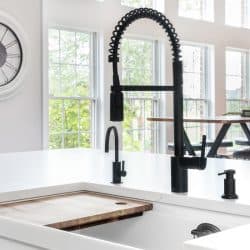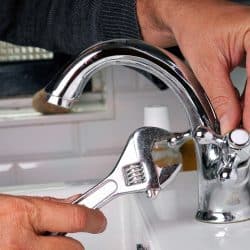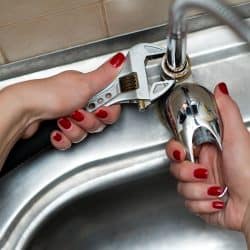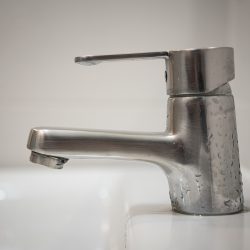Low water pressure is already inconvenient, but more so in the kitchen, where messes and dirty dishes need thorough cleanings. How exactly do you fix a low pressure in your kitchen faucet? You can quickly solve this issue once you have pinpointed the root cause -and we have researched the answers for you.
The solution depends on which part has the issue. First, you need to check the aerator and clean out the debris that might have been blocking it. If that doesn't solve the problem, you probably need to replace the cartridge and fix line blockages.
Kitchen sinks have a lot of nooks that could have contributed to their low pressure. You will need to check each part and see if it could be the culprit. There are many ways you can inspect for causes and apply solutions, so keep reading below to find out more.

How To Fix Low Water Pressure In Kitchen Sink
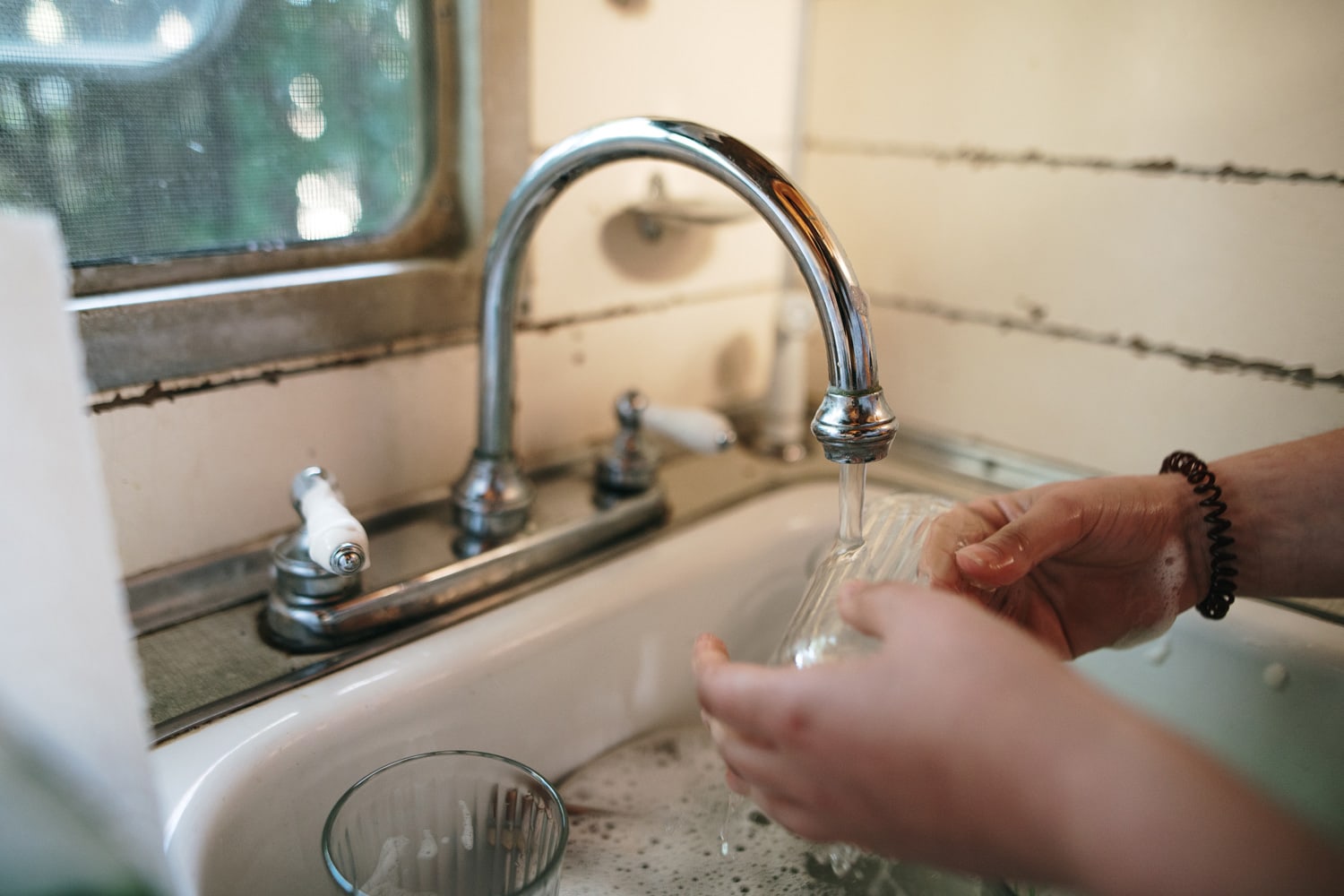
Fixing the water pressure can be challenging, especially if you have a problem with the valve. Some problems have an easy fix, but most of the time, one part will need replacing and a major tune-up.
Here are various ways you can fix your water pressure.
Read: "Should You Silicone Or Caulk Around A Kitchen Sink?"
Check the Aerator
The aerator has tiny holes that filter out dirt and sediment, making it prone to blockages.
Over time, scraps of food and grime might have accumulated on your sink's aerator. This will eventually affect its water pressure. The aerator is the most common culprit for the loss of pressure since it sits at the faucet's mouth.
- Prepare pliers, vinegar, water, and an old toothbrush.
- Turn the screw counter-clockwise to loosen and remove the aerator.
- Mix a solution of water and vinegar in equal parts.
- Soak the aerator in the solution for 30 minutes.
- Check if the gunk is gone. Put it under running water to make sure, and use a toothbrush to clean the smallest corners.
- If all the dirt is gone, reattach it back to the faucet's snout.
- The water pressure should be restored if the problem is solved.
Inspect the Cartridge
The cartridge is responsible for regulating the water flow. When it gets heavily clogged, it lowers the water pressure.
Checking and fixing the cartridge is more challenging than the aerator. Often when there's an issue with the cartridge, it signals a need for replacement.
- Turn off the water supply.
- Use an Allen wrench and remove the valve handle.
- Remove the shut-off valve handle, then lift out the cartridge. Take pictures of their initial position for easy reassembly.
- Clean the cartridge with equal parts vinegar and water. However, it is more advisable to just buy a new one and reattach that to your faucet.
See this faucet cartridge on Amazon.
Check the Water Supply lines for blockages
The water supply lines may be the root of the issue if cleaning the cartridge and aerator didn't do the trick.
Over time, your supply lines can be clogged with mineral deposits, especially if you live in an area with hard water. Fortunately, the solution is fairly easy and can be done without the help of a plumber.
- Switch off the valves and remove excess water.
- Using a wrench, disconnect the supply lines from the sink.
- Flush out the water and dirt from the supply valves. Use a sink to collect them.
- Reassemble the lines to the sink again, but do not tighten them too much this time.
- Open the faucet and observe the water pressure.
Why does the kitchen Sink have Low Water Pressure?
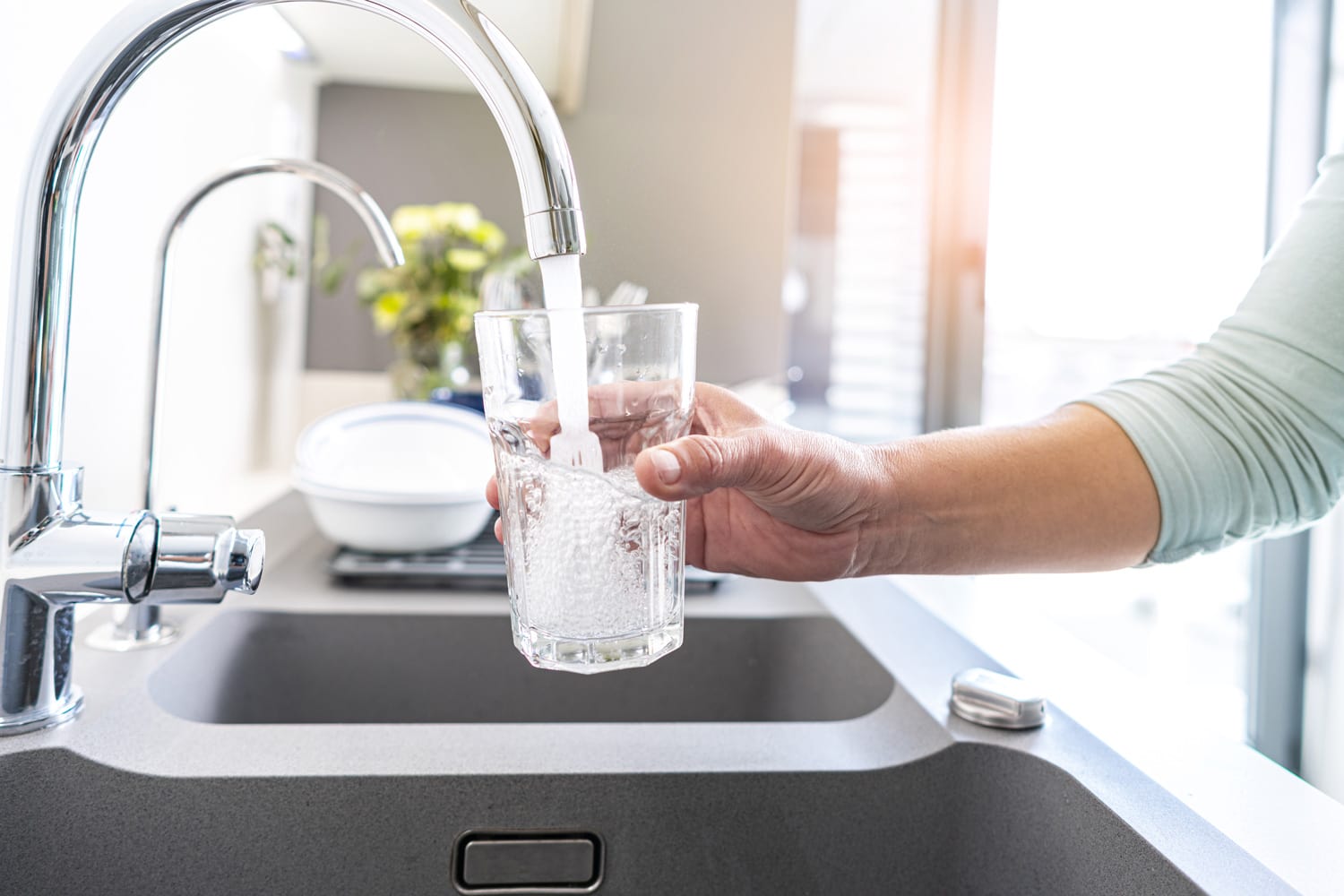
Low Water Pressure is typically caused by clogging different parts of the sink. Although this can be a result of regular wear and tear, it could also be caused by failing to clean the sink regularly.
Food scraps, gunk, and dirt can lower the water pressure if they accumulate enough to block the openings.
It's easier and more time-efficient to first identify the problem by inspecting which parts seem to be damaged or blocked before applying solutions.
Clogged Water Supply Lines
There are other signs that signal clogged water supply lines aside from lower water pressure. When you notice a rancid smell, and if the water takes too long to drain, there may be something wrong with the waterlines.
Properly-flowing water should make the sink drain water quickly. Try flushing your toilet first and observe if there is a continuous whirlpool that sends water down seamlessly.
If you notice gurgling and struggling, the water lines may have been compromised which affected your kitchen sink's water pressure.
Read: "Do Kitchen Sinks Come With Drains?"
Blocked Cartridge
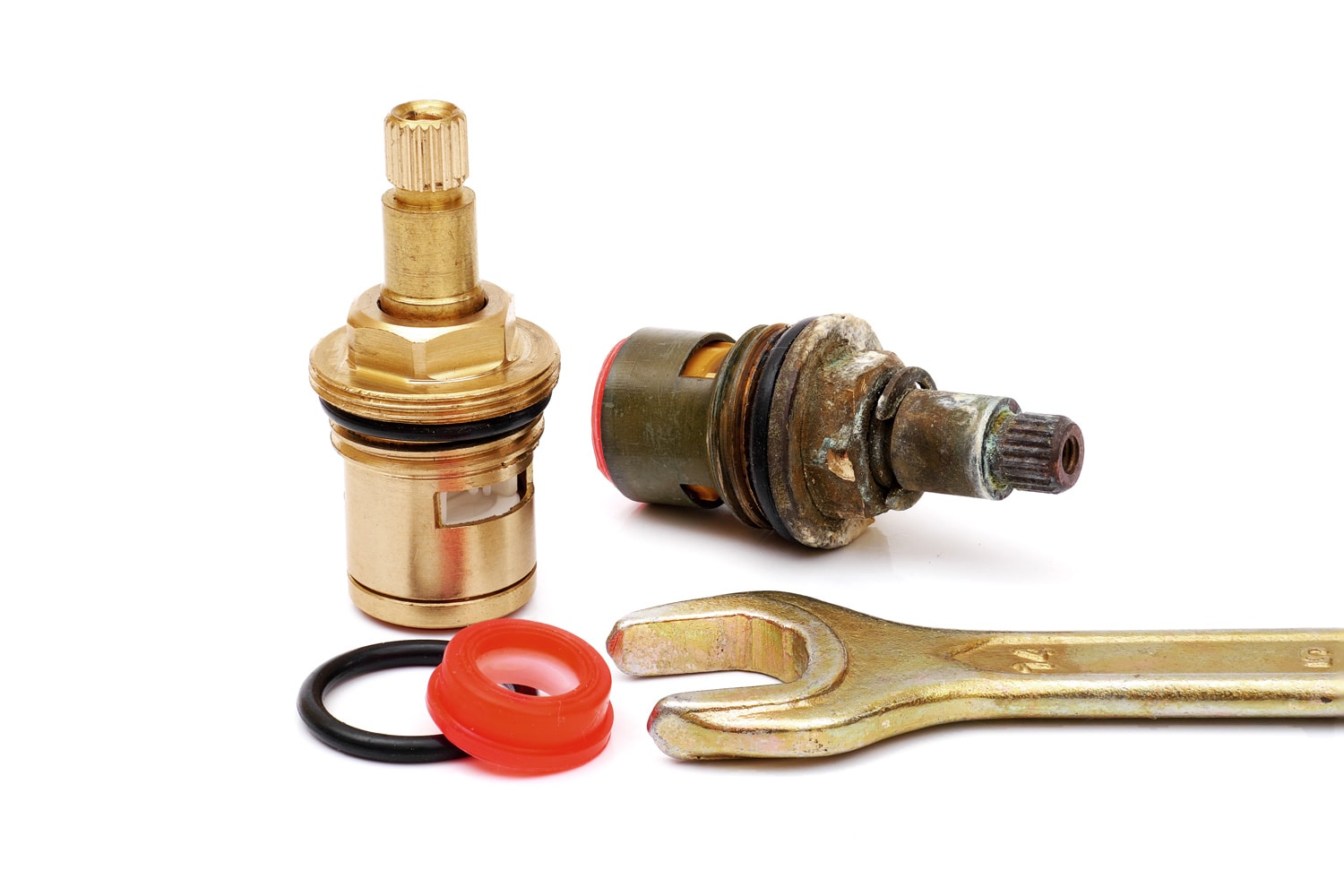
If you live in an area that has unfiltered water, chances are you are more exposed to mineral deposits and hard water. These minerals can eventually harden into crystals and block the water regulator.
Dirty cartridges can also be prone to bacteria and fungi buildup, which can be dangerous to your health. Make sure that you replace it regularly if it is indeed the culprit for your sink's low water pressure.
Here are signs you may have a blocked cartridge:
- Water leaking on the handles, nut, or valve.
- Water handles are stuck in a certain position. You will need to switch off your water supply if it is stuck on "open" mode.
- Difficulty in adjusting the water temperature and pressure.
- A weak water stream.
Cartridges normally last for 15-20 years, so if this is the issue, it would be wiser to just get a new one.
Aerator Clog
If you notice your water is running slowly on top of a weak pressure, your aerator may be clogged. The aerator can get blocked with mineral deposits and food gunk that can affect the water pressure.
It is fairly easy to see if your aerator has been collecting gunk. Although there may be other issues, you should still prioritize cleaning this part.
Some aerators are difficult to disassemble and clean. Some cannot be disassembled at all since it is affixed to the faucet itself. In this case, you will need to call a plumber and have them clean it.
Closed Valve
The faucet's valve is a fixture in your housing unit with a ball in the center. Valves regulate the water supply that comes from the waterline. If the valve might be closed halfway, it may decrease the water stream and water pressure.
It is also easy to tell if you have a closed valve since you only need to look at the handle.
If the handles are parallel to the direction of the valve, it is open. However, if it is angled away from the valve or angled slightly perpendicular, it is most likely closed.
What to do if Only Hot or Cold Water has Low Pressure?
If only one setting--hot or cold--of your sink has low water pressure, there are other causes for this. There could be sediments and mineral deposits clogging your plumbing lines, there could be something wrong with your filter, or there may be leaks on the hot water tank.
Here is what you can do if you notice only hot or cold water has low pressure.
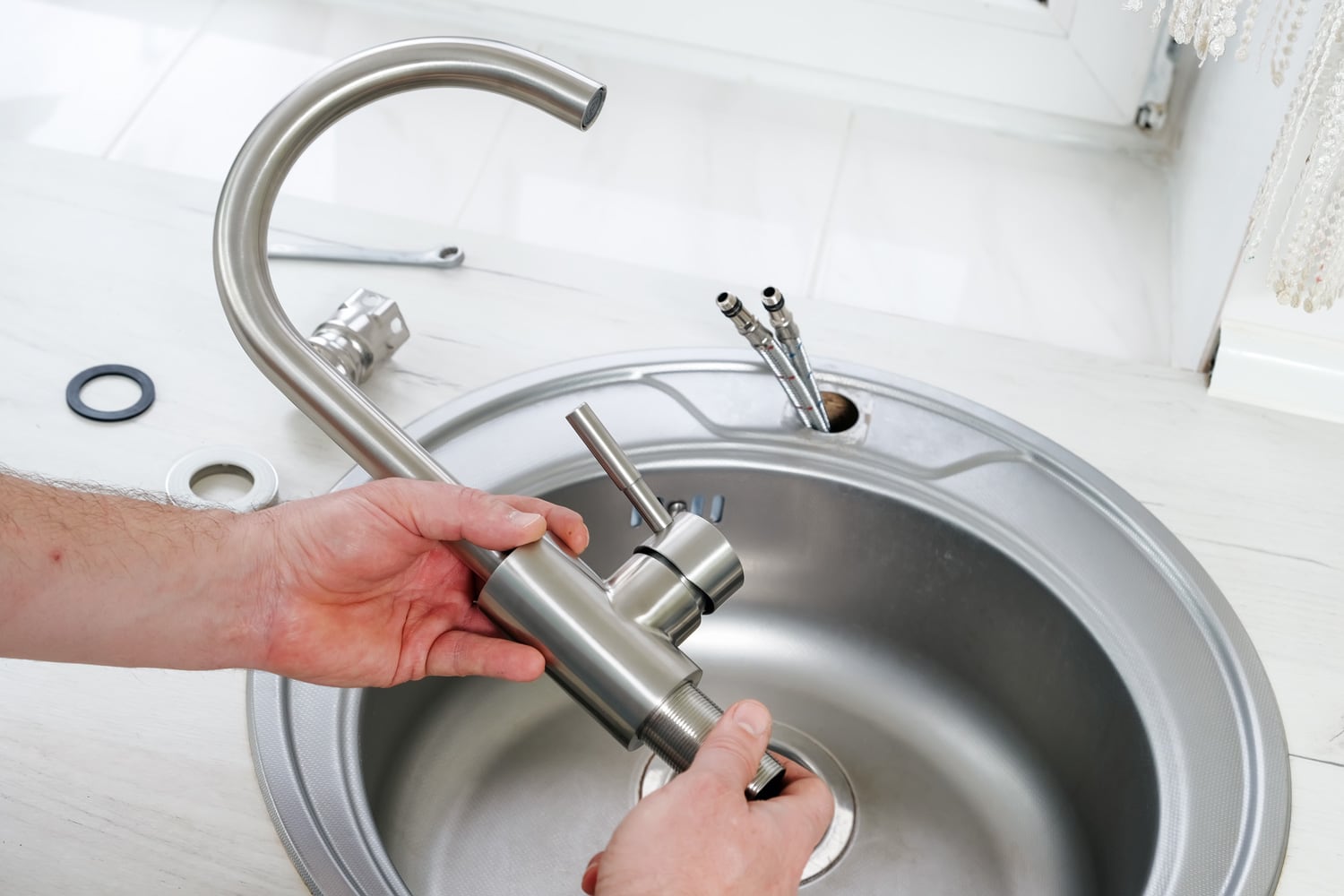
Flush the Water heater
This can be done once a year, and it is fairly easy to do:
- Turn off the water heater thermostat. For electric water heaters, locate the breaker box and switch off the power. For gas water heaters, turn off the valve of the gas pipe going to the thermostat.
- Likewise, turn off the cold water supply that goes to the heater.
- Connect a garden hose to the drainage spigot and let it lead outside or a large container.
- Turn the spigot on and drain the water tank. Continue to do this until the water that comes out becomes clear.
- Flush the water tank. To do this, turn on the cold water leading to your hot water tank. Wait until the water that comes out also becomes clear.
When all the gunk and mineral deposits that have mixed into your heaters are drained, your water pressures should return to normal.
Replace the Water heater
Water heaters have a lifespan of only 10-12 years. If flushing the heater no longer works, or if the water that comes out seems to be permanently brown, it may be time to replace the entire water heater.
Replacing it should restore the water pressure of your heated water.
Final Thoughts
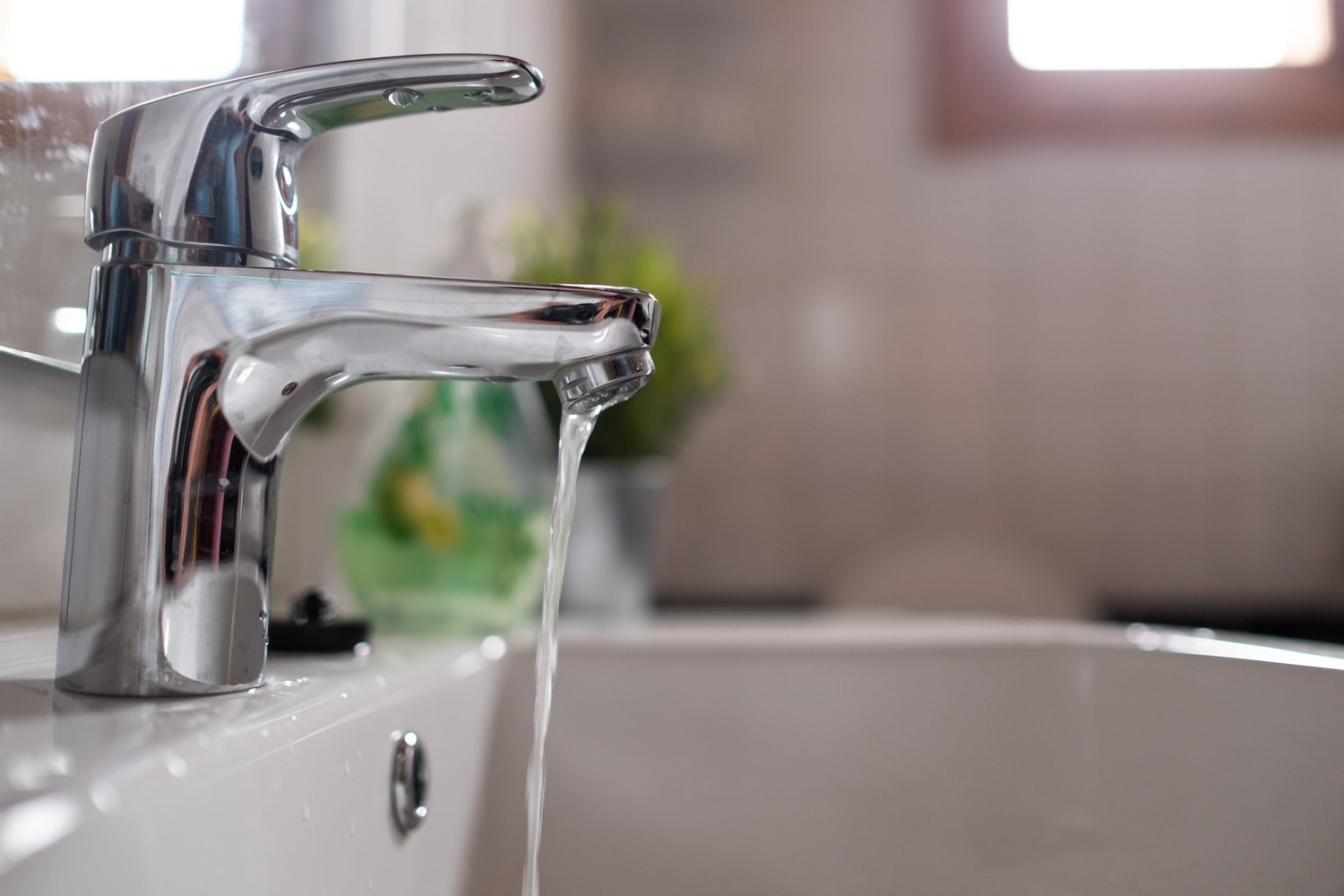
Appropriate water pressure is important to keep things running in your house. If it starts to decrease, and your neighbors aren't experiencing the same thing, it may be time for plumbing and maintenance.
As with all kitchen fixtures, proper cleaning is key to keeping the water pressure high.



